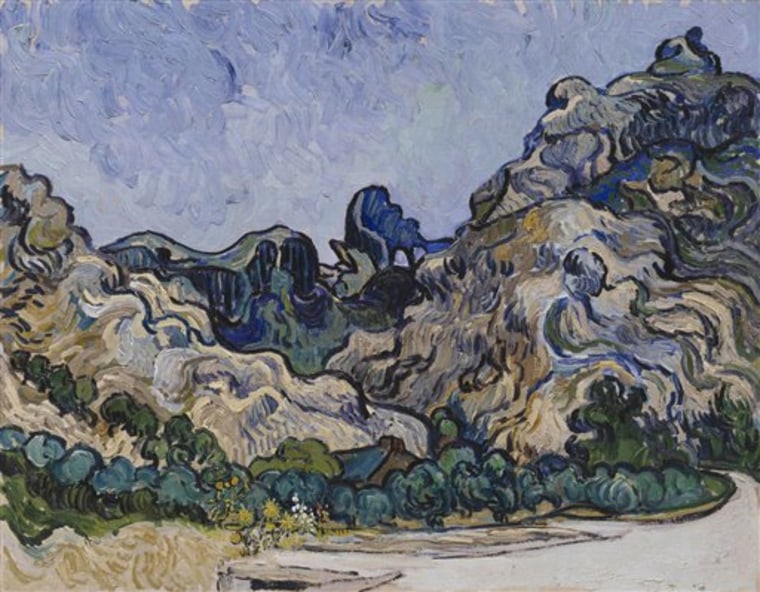The calm gray-blue sky in an otherwise agitated Vincent Van Gogh painting. The flesh of a nude woman as painted by Amedeo Modigliani. Or the vibrant yellows, blues and chartreuse in a Franz Marc geometric masterpiece.
Your next wall color could be famous. Or at least, it could share specks of colors seen in pieces on display at one of the world's most famous art museums, the Solomon R. Guggenheim Museum.
The museum has chosen 150 colors from its collections and galleries in a new partnership with Fine Paints of Europe, an upscale paint company based in Vermont. Through a meticulous selection and matching process that involved everything from holding up paint chips beside century-old paintings to stopping someone on the subway because of her shirt color, they have developed two distinct collections: one of colors used on gallery walls and another of colors used in paintings.
Homeowners are more likely to use paint to create a mood for a room than to display multimillion-dollar works of art. But the same principles that museums use in designing galleries apply, said Karen Meyerhoff, managing director for business development at the Guggenheim. They use colors to evoke emotions or theatrics, and to highlight paintings on display.
"We have specialized expertise and it's something we do every day," Meyerhoff said.
The 150 colors are striking. The classical collection takes colors directly from the museum's vast collection, focusing primarily on the period from the late 19th century to 1937, including works by Paul Cezanne, Vasily Kandinsky and Van Gogh. The colors are not named or identified as being from a particular painting because they have been taken out of that context, Meyerhoff said.
The gallery colors are taken directly from the background walls and fixtures in the Guggenheim's galleries, a range of neutral tans, greys and whites, but also more vibrant colors including a deep navy and a smoky red. Some were created by Frank Lloyd Wright, who designed the museum on New York's Upper East Side. There's a beige that was the original exterior color of the museum, and a rusty red that is the original — and current — color of the central elevator.

Curators and gallery workers spent months selecting the colors, studying paintings and noticing which colors appeared most often, or were most unique. Then, they had to find real-life samples so the paint company could develop color formulas to match. Meyerhoff and the Guggenheim staff used Pantone chips, paint decks, magazines.
"I stopped someone on the subway because of her yellow shirt," Meyerhoff laughed.
Then the samples went to Fine Paints of Europe, which replicated the colors by using a spectrometer, which isolates a hue and determines a formula to create it in paint.
"This is not eye matching. This is not human judgment," said John Lahey, founder and owner of the Woodstock, Vt.-based company. "This is technology."
But for Meyerhoff, and for homeowners who use the paints, it's all about emotion and feelings. Galleries use background colors to play off paintings, either by drawing directly from colors in the works or by creating the feel of a particular time and place. For instance, Meyerhoff uses light and dark browns and pale gray greens to evoke 1930s Europe.
The Guggenheim paint collections cost $35 per half liter, or $130 per 2.5-liter can, which is about two-thirds of a gallon. By comparison, a typical gallon of paint sold at most retail stores costs about $27. Lahey said the paint can get as much as 50 percent more coverage than traditional paints.
Homeowners may use wall color to enliven a living space, creating a calming atmosphere or one of warmth.
Meyerhoff has some tips on choosing colors for rooms at home:
— Use gray to mute the background and put the focus on your objects, whether they're works of art, or features such as fireplaces, crown molding or furniture.
— Pick up a tone for a featured object in the room — such as a couch — and use a similar tone on the walls. Having the same tone throughout will soften a room.
— If you have something you want to hide — such as bad corners or pipes — use dark colors.
— To make a dramatic statement, paint one wall a strong color, such as a vibrant red or blue.
Fine Paints of Europe offers color consultations to customers six days a week by phone.